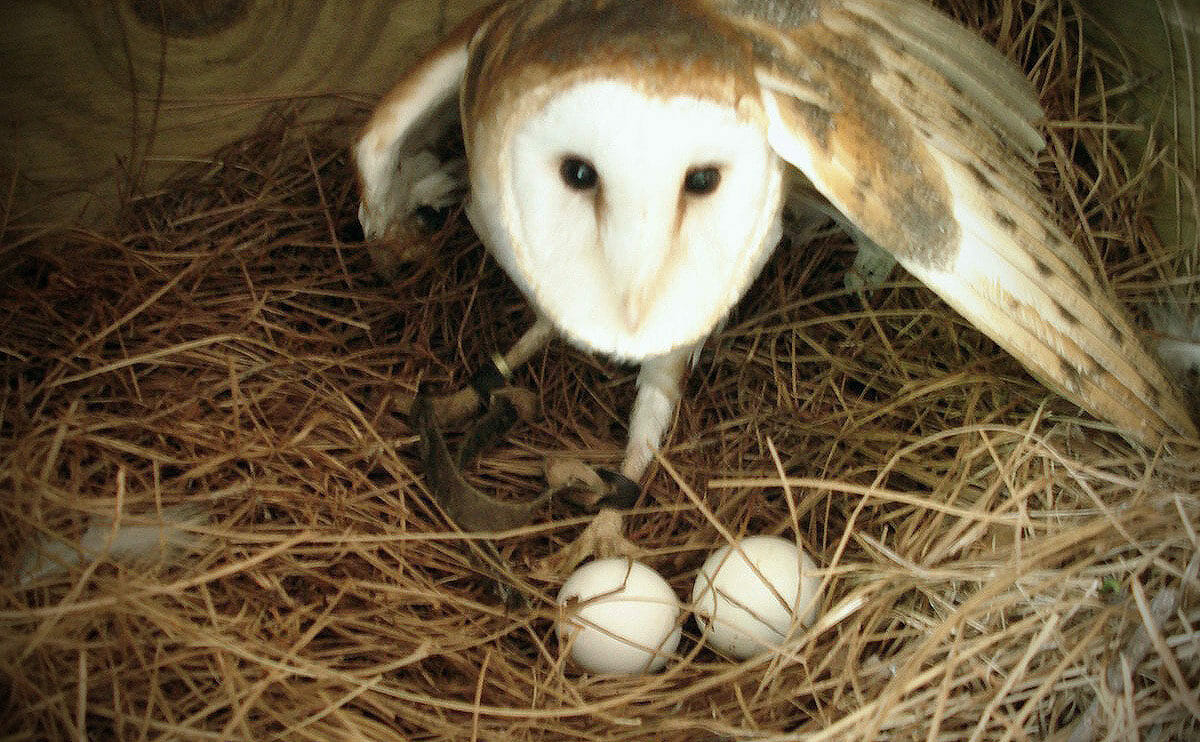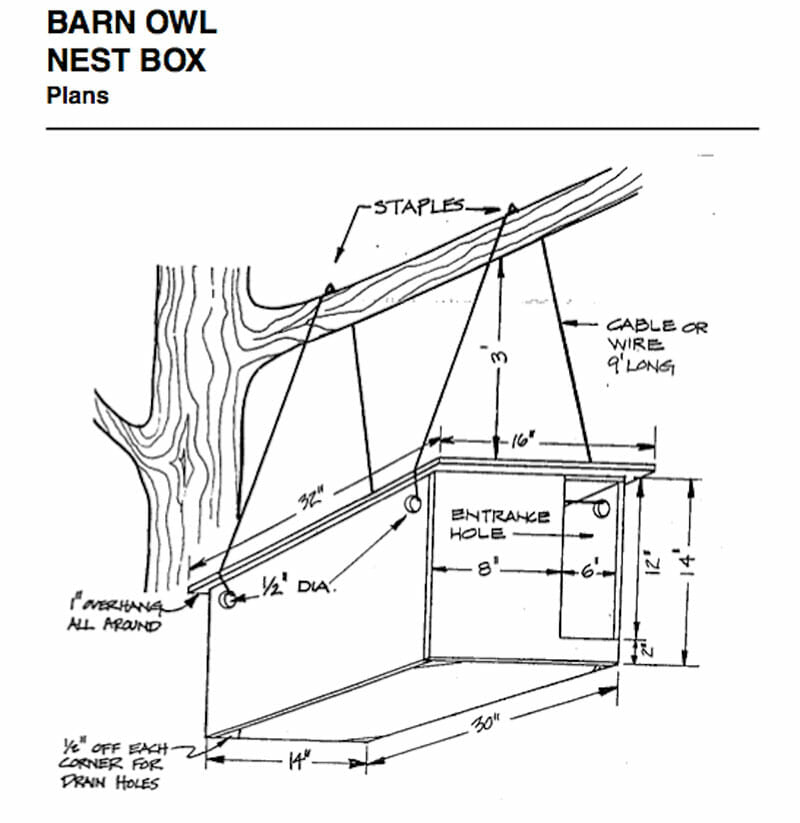If you are looking to rid your property of rodents, may we suggest a solution: the barn owl.

Unlike other owl species, like great-horned owl or barred owl, barn owls have a heavy preference for rats and mice. And while they might be adorable, they are also natural killers. Barn owls hear so well that a mouse’s heartbeat alerts them to nearby prey. Their velvety feathers allow them to approach their victims silently in total darkness, a busy time to hunt. One barn owl can cover over a mile and will eat between three and six mice each night, approximately 2,000 mice yearly. A family, including chicks, in one nest box, can devour 8,000 mice in one year.
One barn owl can cover an area of over a mile and will eat between three and six mice each night, approximately 2,000 mice yearly. A family, including chicks, in one nest box, can devour 8,000 mice in one year.
So how to get owls to take up residence on your property? Barn owls want homes that are cozy, warm and safe. Many live in rafters, tree cavities and in barns because they do not build nests. This gives farmers the opportunity to provide a home and enable owls to hunt rodents in fields, improving crop production, yield and profit.
There are several designs for building nest houses which range from an elaborate two floors along with perches to a simple one-floor box. Each type requires specific measurements a barn owl needs for comfort and family growth.
You will need: plywood, galvanized nails, plastic resin or wood glue, paint, 4 x 4 posts, wire, sawdust or woodchips and a few basic tools.
[mf_h5 align=”left” transform=”uppercase”]1. Find Your Location[/mf_h5]
Because placement of boxes is crucial, the first step is to take a close look at rodent-infested areas and estimate the number of boxes required, figuring one box for every 640 acres. Make sure the box will be safe from any cats, gophers or raccoons by placing it within 100 yards of any large tree that creates an umbrella of protection, such as an oak or sycamore. Because barn owls fly low, make sure the boxes are away from any road traffic and human activity.
[mf_h5 align=”left” transform=”uppercase”]2. Find the Right Box for You[/mf_h5]
Next, decide on the type of nesting box you desire, from elaborate designs complete with indoor-outdoor perches and insulation to simple one-room construction. A one-room nest includes minimum dimensions of 12 inches by 12 inches for the floor and a cavity depth of 16 inches. The entrance should be approximately five to six inches in diameter, located near the floor of the box to provide availability for young chicks. Include a room in the main frame 16 inches by 26 inches to give a one-inch overhang all around.
[mf_h5 align=”left” transform=”uppercase”]3. Make the Box[/mf_h5]
To construct the nesting box, you can use scrap exterior grade three-eighths inch or one-half inch plywood and #4 or #5 galvanized hot dipped nails. When all sections have been cut, use a marine grade plastic resin or exterior wood glue to assemble.
[mf_h5 align=”left” transform=”uppercase”]4. Allow for Airflow[/mf_h5]
Once the frame is completed, drill vent holes to allow air circulation near the roof. Follow with a water drainage plan by making additional holes in the floor, near the corners of the box.
[mf_h5 align=”left” transform=”uppercase”]5. Spruce It Up [/mf_h5]
Two inches of sawdust or woodchips may be placed on the floor. Then, to spruce it up and prevent wood warp, paint the finished boxes a dull green, black or brown color to help camouflage the nest. Use an oil based stain or latex-based paint on the exterior only.
[mf_h5 align=”left” transform=”uppercase”]6. Decide If You Want to Build a Neighborhood[/mf_h5]
When you have completed the house, you can install a single or multiple boxes at the end of your produce rows.
[mf_h5 align=”left” transform=”uppercase”]7. Mount Your Box[/mf_h5]
On a 16-foot-high 4′ x 4′ post buried 3.5 feet in the ground. Once a box is placed on a post, it is best to wrap it with a metal, conical predator guard.
[mf_h5 align=”left” transform=”uppercase”]8. Keep Your Box Clean[/mf_h5]
To reassure return of barn owls and their families, make sure to clean and inspect any box on the premises twice each year, in June and in November. Because birds bring all kinds of vegetation and hair into the box to keep their brood safe and warm, parasites easily enter. Open the box carefully and lift the box down from its’ position, then scoop out all the contents including unhatched eggs. Place all of the contents into a plastic bag and close tightly, disposing away from children and animals. Scrub the inside and outside of the box with boiling water and let it air dry. Lay fresh sawdust on the floor. And keep your distance from the box to allow new barn owl families to discover their home.
Provide decent living quarters and barn owls may help keep your fields free from pesticide usage, free from predators, increase their population and offer quality environmental and sustainable green space for everyone. For further information and references, you can contact the Dept. of Conservation, the Barn Owl Center, the Barn Owl Conservation Network and the Santa Clara Audubon Society.
Go forth and build yourself a barn owl nest box!

Interested in small farm animals & gardening.
Interested in organic gardening, organic veg and fruit production and animals.
interested in making best use of smaller land